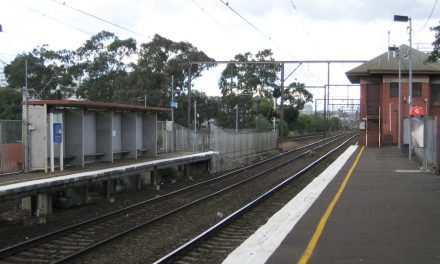To avoid any penalty, the train operator Metro only needs to meet two Key Performance Indicators (KPIs):
- % Delivery – 98% of services must be delivered as scheduled.
- % Punctuality – 88% of trains must be run within 5 minutes of scheduled time.
However, there are many other factors of no less importance than these 2 metrics. These may include the items listed in the following table based on the perspective of the train passengers. I consider these consumer-focused targets to be far more important than the operational targets being tracked by Metro such as the coverage of train journey in kilometres (Ref 1a).
| Performance Indicator | Using Altona Loop as an Example |
| Waiting time or service frequency | Train every 22 min during peak hours. |
| Convenience & no. of connections to destination | 2 connections or 3 trains to get to a City Loop station during non-peak hours, compared to just 1 train in the past. |
| Connectivity between train services or with other public transport modes (bus/tram) | Poor, 6-22 min or more from 1 train to the next connecting train, especially if you are travelling between Werribee and Altona during peak hours. |
| Duration of train journey | About 25 min to get to a City Loop station during non-peak hours in the past but this is extended to as long as 1 hour 15 min under current timetable. |
| Ease of understanding and using the system | There are 5 timeslots daily (early morning, morning peak, interpeak, evening peak, night) during which trains operate differently. Things also change during the weekends e.g. trains run through the City Loop during weekends but not on weekdays. Will be a great problem for certain groups of users e.g. occasional users, visitors, elderly, etc. A quote from PTUA President Daniel Bowen: “the timetable is impossible to memorize” (Ref 1). |
| Passenger load | Whether there is overcrowding, affecting the ability to board a packed train, to have comfortable standing space and to obtain a seat at some points of the journey. |
| Maintenance of trains and train stations e.g. cleanliness, comfort | Now I have to travel twice weekly on the Lilydale line. I envy the newer and well-maintained trains used on this line. Probably these will eventually be transferred to the western suburbs after Metro receives its new train stock. |
| Quality of customer service | These include:
|
The punctuality and delivery indicators alone are highly inadequate to reflect and benchmark the quality of train services. Train passengers may still receive very poor services even when the train operator delivers way above the 2 performance targets simply because many factors that matter a lot to passengers (such as those shown in the above table) are not taken into the computation.
Furthermore, the current 2 KPIs can be easily but cosmetically enhanced through a number of shortcuts. The most apparent and talked-about “quick-fix” is giving Metro the authority to redefine the standards through addition of 2-5 minutes, the so-called “slack“, to a train journey on various lines (Ref 1, 2, 3). This strategy is so successful in producing results that the same proven formula will be repeated under the impending timetable change (Ref 4, 5, 6). Making the journey time more realistic is an ingenious but camouflaged way of saying “let us lower the bar to make it easier to climb over it“. Having been a teacher under the performance-based pay system in Singapore, I wish I could have the power to modify the grading scheme such that my students score a distinction if they obtain 50 marks or more.
I believe the 2 KPIs are based on daily averages and heavier weightings are not given to peak hours when services are most sought after. The peak hours will be the period most difficult to achieve punctuality, due to large number of commuters boarding and alighting trains at each station, resulting in cumulative delays. The second strategy will be to increase the proportion of more “reliable” or “manageable” services, that is, those with lower passenger traffic, while maintaining more or less the same number of peak hour services. This can be achieved through the following “tricks“:
- Having more express services making stops at fewer stations.
- Reducing the length of the journey e.g. terminating at Laverton instead of proceeding all the way to Werribee (Ref 7) and making trains go direct to Flinders Street rather than through the City Loop.
- Creating new short-distance services e.g. the Altona Loop Shuttle which covers only 5 stations (Ref 8).
- Having more services during non-peak period e.g. Altona Loop trains run at 22 minutes intervals during peak hours but at 20 minutes intervals during non-peak hours. According to this article, Laburnum has lost 10 morning peak services, Camberwell 10 and Glenferrie 6, under the last timetable change. It will be interesting to see for the impending timetable change, whether the increase in services primarily occur during the peak or non-peak hours.
- Running more trains in the less busy directions during peak hours e.g. away from the City in the morning and towards the City in the evening peak hours.
- Avoiding rather than solving bottlenecks e.g. bypassing the single-tracks in the Altona Loop through the use of shuttle services. There may be 2 tactical reasons why the shuttle services are implemented during interpeak rather than peak hours (which do not appear logical if you think along the line that it will make more sense to remove bottlenecks during peak hours). Firstly, having shuttle services at peak hours will attract too much community objection. Secondly, there are far more train services during the interpeak hours relative to the peak hours. Hence, it will be a priority to ensure the Werribee train services are unhindered by the Altona single tracks during this long interpeak period as this is a key instrument in increasing the proportion of more reliable services.
As it is much easier to run the above-mentioned services on time, this will inevitably lead to better measure of the KPIs. However, merely fiddling with these 2 KPIs will not lead to fundamental improvement in train services. A recent survey shows that customer satisfaction is at the highest level in 5 years (Ref 9) but I do not think having an index score of 64 is something to be proud of. There still exists a chasm between customer satisfaction and KPIs that need to be bridged, particularly for the Seaholme-Werribee line segment which has the lowest customer satisfaction for the Oct-Dec 2011 quarter (Ref 10, 11)
The train operator has a number of unique characteristics which differentiate it from either a public service or a private business, which I will elaborate as follows:
- Having no competitors, it enjoys a monopoly and faces no pressure to satisfy and attract customers for its subsistence. Essentially, it is not operating in a consumer-driven free market.
- A long 8-year contract means that you are forced to stick with it for this duration of time even if you are not satisfied with its performance. This is unlike governments which are elected on a 4-year cycle on the basis of popular support.
- It is a commercial company, whose motivations lie in maximizing profits to its shareholders so it will adopt any measure to achieve this end. I may be wrong – it may not be held to account in the same way as government bodies.
- Separation of responsibilities between train operation (Metro), rail infrastructure (VicTrack), train stock (Dept of Transport), ticketing (Transport Ticketing Authority), marketing (Metlink) and security (Police) makes it easier for blame-shifting.
As taxpayers are paying an enormous amount to the tune of more than $1 billion a year for Melbourne’s privatised train and trams (Ref 12), it is imperative that we are getting the maximum value out of the contract. The contract must be well-designed, will cover all scenarios and protect the interests of the consumers.
I feel that there is a need for a composite performance metric that does not depend exclusively on service delivery and punctuality but also include a range of other equally important criteria such as what I have earlier discussed. The Department of Transport could involve local and overseas public transport academics and experts in developing such a comprehensive metric.
16/03/2012 update: Recent statistics appear to lend weight to the hypotheses raised in this post. Quoting from this news article: “The overhaul of Melbourne’s train timetable last year has done almost nothing to ease the peak-hour commuter crush, a passenger count has revealed…..The only thing the new timetable has been good for is Metro’s bottom line…….Metro, the metropolitan train operator, has received $4.21 million in incentive payments since May for running its trains on time following a sweeping timetable change that increased journey times on some lines but improved reliability……No improvements were recorded on the Werribee, Epping and Hurstbridge lines…….”
25/05/2012 update: From The Age’s article – Metro has resorted to skipping stations and running unscheduled short services since its new timetable was introduced last month, stranding passengers so its trains will run on time. It has happened at least four times a day on average. Drivers say the rate at which they have been ordered to alter a service mid-journey suddenly became ”prolific” when a new train timetable was introduced on April 22……the rail operator has been accused of reaching its targets by running ”half-services”.






Hi Anthony, That's a brilliant summary -fair and accurate. Thanks for putting it in perspective. We in the Altona Loop really do seem to get the pointy end of the stick far too often. "For the greater good" seems to be Andrew Lezala's buzz phrase but I think the greater good is Metro rather than the public who use our "public" transport.
Maree Kinniburgh